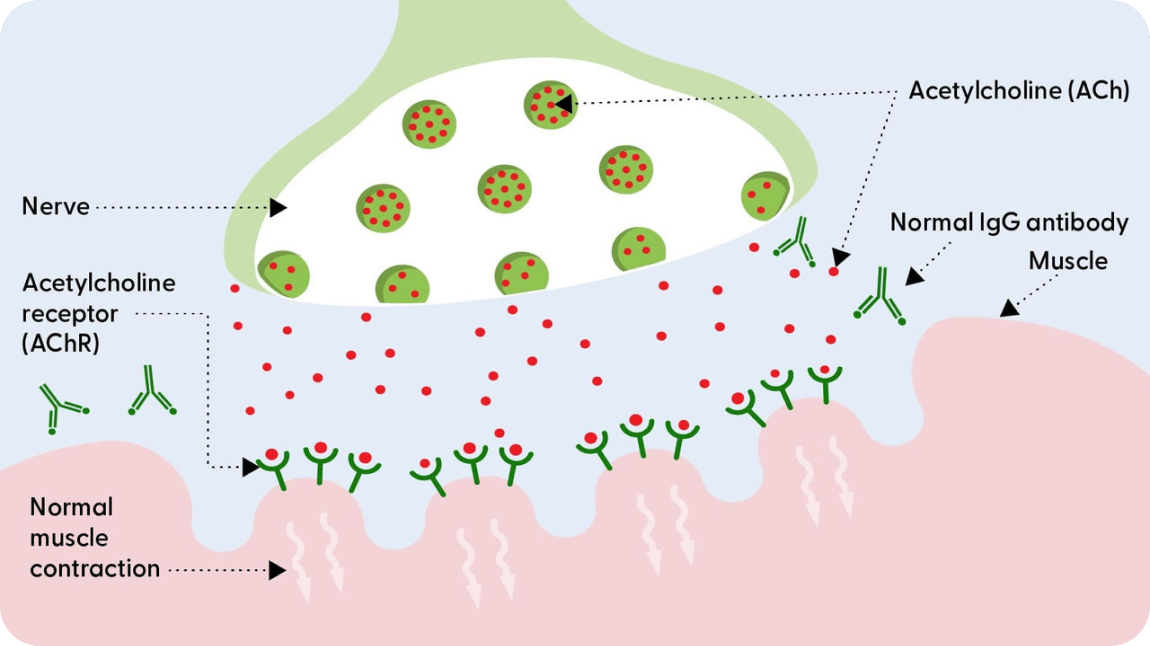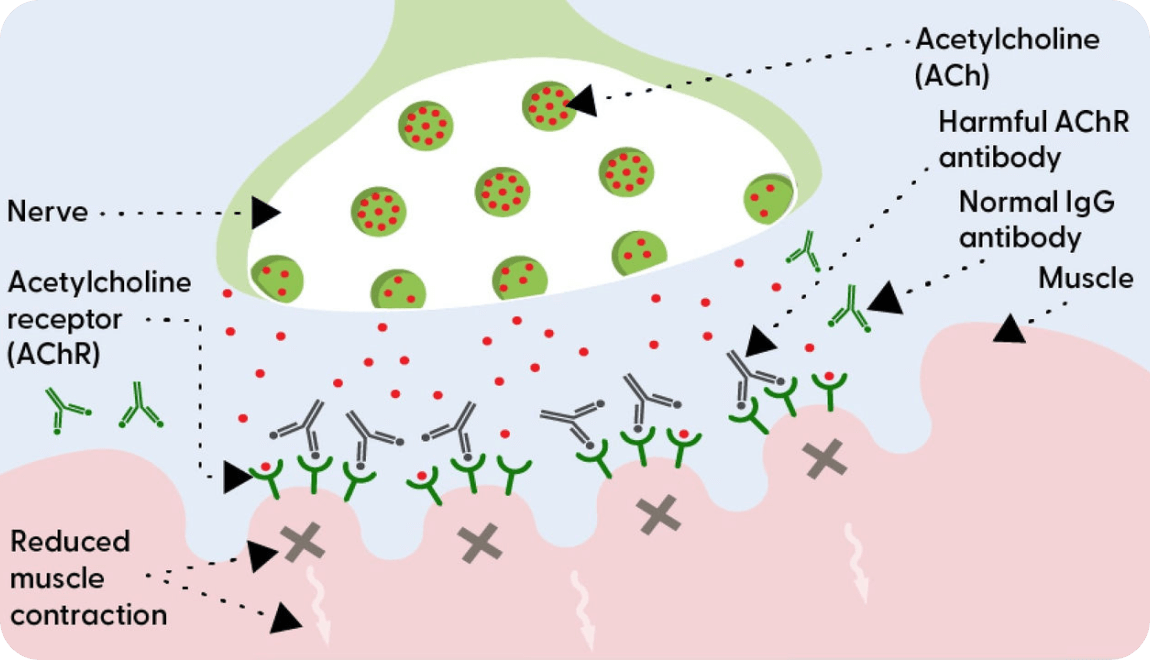
Autoimmune diseases in a nutshell
Autoimmune diseases occur when the immune system attacks the body's own components. These conditions are not contagious. Some people have an inherited predisposition, but in many cases the causes are still largely unknown.(2)


While there is no cure, MG symptoms can be treated
A treatment goal for people living with MG is to reduce symptoms or become symptom-free for a period of time. For this reason, you may want to have frequent conversations with your doctor about your MG symptoms. The MG-ADL scale is one tool used to measure MG symptoms, where symptoms are measured from 0-24, with a higher score meaning more severe MG.(4)
Explore more useful content

Initiate the conversation with your doctor
Living with myasthenia gravis shouldn't stop you from doing the things you love. By talking to your healthcare professional, you can find a management plan that is tailored to your personal goals.
REFERENCES :
1. Gilhus NE. N Engl J Med. 2016;375(26):2570-2581.
2. Myasthenia Gravis Fact Sheet. National Institute of Neurological Disorders and Stroke Website. Updated March 2020. Accessed May 2020. https://www.ninds.nih.gov/myasthenia-gravis-fact-sheet
3. Myasthenia Gravis Foundation of America. Overview of Myasthenia Gravis. 2020. https://myasthenia.org/understanding-mg/what-is-myasthenia-gravis. Accessed Sept 2024.
4. Wolfe GI, et al. Neurology. 1999;52(7):1487-1489.



